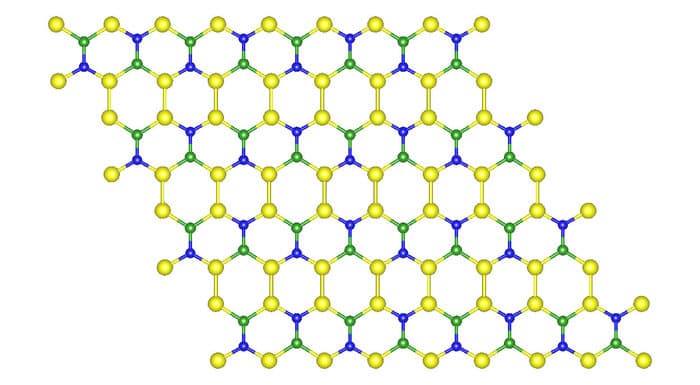New One Atom Thick Material Could Be A Boon For Digital Technology
Physicists from the University of Kentucky in collaboration with Daimler in Germany and the Institute for Electronic Structure and Laser (IESL) in Greece have artificially designed an amalgamated form of silicon, boron and nitrogen which together is expected to perform much better than graphene. Recent studies have favoured Graphene due to its extraordinary strength and electrical and thermal properties. However, as it lacks the unique properties found in semi-conductors, the applications of graphene are still restricted in the field of digital electronics.
Madhu Menon, a physicist of Indian origin stated that the newest research product is a wonder in terms of its stability. With heavy theoretical computations, they could show that the combination of three elements resulted in a material which might even be able to replace graphene in several of its applications.
To aid the contemporary system, scientists were experimenting with a new class of three-layer materials named transition-metal dichalcogenides (TMDCs). But their bulky nature pushed researchers to tinker with the properties of boron, silicon and nitrogen in order to select an element that is light, earth abundant, inexpensive and a semiconductor.

The atoms in the new structure
During the process, only one arrangement of these elements found a stable structure, whereas the other structures collapsed. As the sizes of atoms and types of bonds are different, the final molecule bears an unequal, peculiar structure unlike graphene. Though the product is metallic, it could be operated exactly like a semiconductor with certain tweaks.
Researchers claimed that their work was successful in opening a new chapter in material science which will eventually help to upgrade the “smart†electronics industry to grow beyond its current limit. The complete research is summarized in Physical Review B journal.
Watch Madhu Menon proposes new 2D material:
Source: #-Link-Snipped-#
Madhu Menon, a physicist of Indian origin stated that the newest research product is a wonder in terms of its stability. With heavy theoretical computations, they could show that the combination of three elements resulted in a material which might even be able to replace graphene in several of its applications.
To aid the contemporary system, scientists were experimenting with a new class of three-layer materials named transition-metal dichalcogenides (TMDCs). But their bulky nature pushed researchers to tinker with the properties of boron, silicon and nitrogen in order to select an element that is light, earth abundant, inexpensive and a semiconductor.

The atoms in the new structure
Researchers claimed that their work was successful in opening a new chapter in material science which will eventually help to upgrade the “smart†electronics industry to grow beyond its current limit. The complete research is summarized in Physical Review B journal.
Watch Madhu Menon proposes new 2D material:
Source: #-Link-Snipped-#
0
